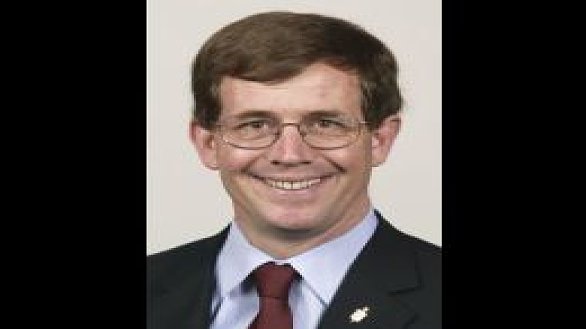Photo: Bishop Scott Jones
By Heather Hahn
The time has come for The United Methodist Church to get serious about its global nature and be less U.S.-centric, says an international panel of United Methodist leaders.
“We are really hoping to shape the hearts and minds of the church,” said Bishop Scott J. Jones, chair of the Committee to Study the Worldwide Nature of The United Methodist Church. “We want the leaders to understand our worldwide nature and the diversity that we think is a real blessing in the life of the church.”
To that end, the 20-member committee has issued a report and proposed legislation to General Conference, the denomination’s top lawmaking body.
The legislation would:
• Incorporate a new worldwide United Methodist Church covenant into the Book of Discipline, the denomination’s law book. The covenant will be accompanied by a “Litany for the Covenant of The Worldwide United Methodist Church.”
• Make clear in a new global Book of Discipline what decisions the General Conference makes, and which areas of ministry and organization are adaptable by central conferences outside the United States.
• Clarify how general agencies function in a worldwide rather than U.S.-centric church.
• Set in motion a process for annual (regional) conferences to study a proposed new model for a worldwide church. This study process may result in petitions for greater structural change at the 2016 General Conference.
Passing this legislation will require a majority vote of General Conference delegates. The next General Conference meets April 24-May 4, 2012, in Tampa, Fla.
Studying and listening
The United Methodist Church has nearly 40,000 congregations in the United States, Africa, Europe and the Philippines. As of 2010, the denomination’s membership topped 12 million members worldwide.
However, the denomination’s U.S. membership has been declining for more than 40 years, even as the church in Africa and the Philippines has been growing. Today, about 7.8 million United Methodists live in the United States.
The 2008 General Conference authorized the formation of a worldwide nature study committee to examine the denomination’s changing demographics and take recommendations to General Conference.
The group met six times between August 2009 and July 2011. In addition, members traveled around the globe for listening sessions with United Methodists in the Philippines, Liberia, Côte d'Ivoire, Democratic Republic of the Congo, Zimbabwe, Mozambique and Europe as well as the United States.
In its report to General Conference, the panel listed some of what members heard in their travels to central conferences, including desires for more ministerial education, greater communication with general agencies and the ability to adapt the Book of Discipline.
Overwhelmingly, Jones said, he heard “a strong desire for the worldwide unity of the church at the same time as a desire for greater mutual understanding and respect.
“The dynamic with which we were working was the desire to clarify what holds us together while allowing for greater freedom in other matters,” he added.
Proposed changes
The committee is particularly eager to get United Methodists on board with adding the new covenant to the Book of Discipline, said Jones, who also oversees the Kansas Area. The covenant puts into words values most church members already embrace but may not be fully aware of, he said.
“United Methodists throughout the world are bound together in a connectional covenant in which we support and hold each other accountable for faithful discipleship and mission,” the covenant says in part. “Integrally holding connectional unity and local freedom, we seek to proclaim and embody the gospel in ways responsible to our specific cultural and social context while maintaining ‘a vital web of interactive relationships.’”
The proposed legislation to clarify the Book of Discipline specifies that matters such as the denomination’s doctrine, Constitution, Social Principles and structure would not be subject to adaption. However, the legislation, if passed, would empower annual conferences outside the United States to set some different educational standards for ordination as elders and deacons.
At General Conference, the committee also wants to set in motion consideration of a new worldwide model that would have The United Methodist Church organized in the same central conferences structure, with the five U.S. jurisdictions constituting a new central conference.
Under the model, jurisdictions would still elect bishops in the United States, and larger central conferences would have the right to form jurisdictions within their boundaries.
In 2009 and early 2010, voters at annual conferences rejected constitutional amendments approved by the 2008 General Conference that would have formed similar regional bodies.
“The key lesson of the constitutional amendments passed by the 2008 General Conference is that the church must take time to think these issues through as carefully as possible,” the committee said in its report. “The committee is proposing a model for conversation during the next (four years). This model, we hope, will stimulate proposals for action in the 2016 General Conference to change our worldwide structure.”
Ultimately, committee members said, conversation about the denomination’s global nature must continue beyond next year’s General Conference.
Liberia Area Bishop John G. Innis, a committee member, said he hopes next year’s gathering will promote church unity.
“Let us prepare ourselves for General Conference to sing praises to God and preach a common word,” he said, “so that we who confess Jesus Christ as Lord and Savior can make the world a better place.”
*Hahn is a multimedia news reporter for United Methodist News Service.


